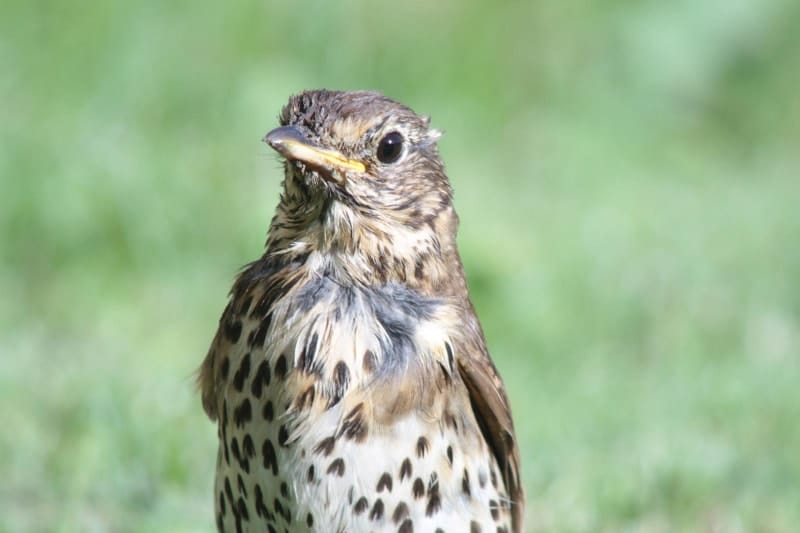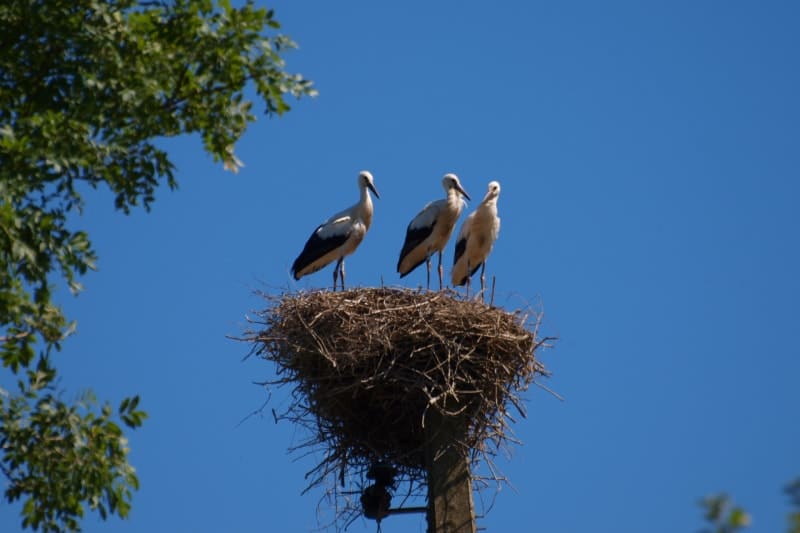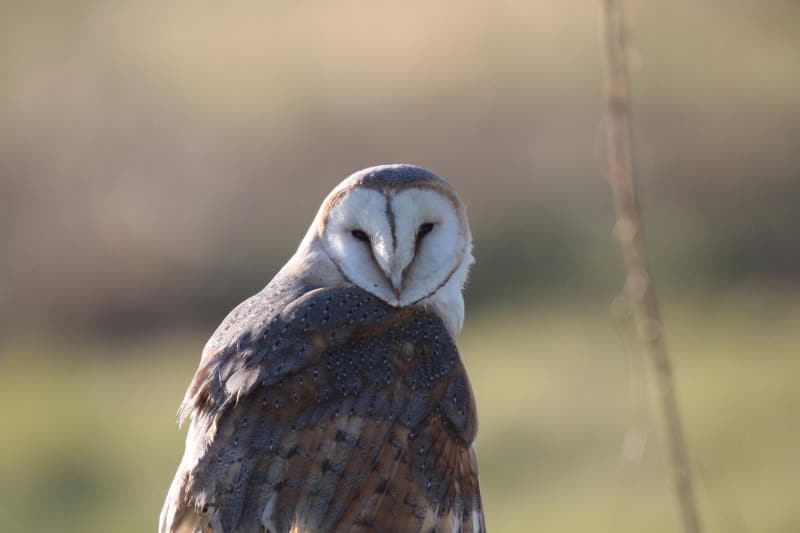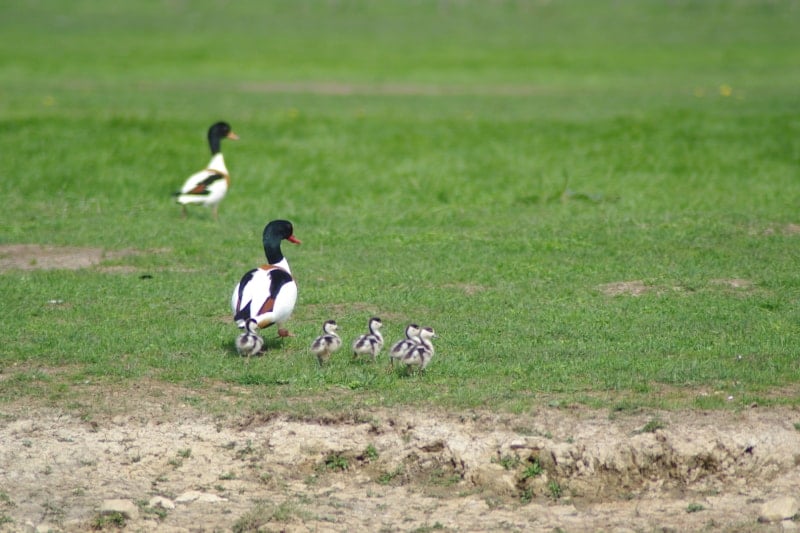Guided boat trip to discover the Parc des Marais du Cotentin and Bessin
Moored at the Jourdan bridge between Carentan and Saint Côme du Mont, the Barbey d’Aurévilly II is waiting only for its passengers to take a walk along the Douve. Crossing the Cotentin marshes from one of its rivers is the way to admire and understand this preserved and rich environment of an amazing fauna and flora.
A nature getaway in the heart of the Parc des Marais du Cotentin
Classified Regional Natural Park since 1991, the marshes of Cotentin and Bessin are a protected naturel area that extends over no less than 148 000 hectares from La Manche to Calvados.
We propose you to come on a river ride on the Douve to discover its landscape of bocage between marshes, wet meadows. A bucolic setting that will certainly make you feel different when you sail near the horses and cows that graze in the fields and observe the many migratory birds that take flights above the river bed. Not to mention an equally aquatic life.
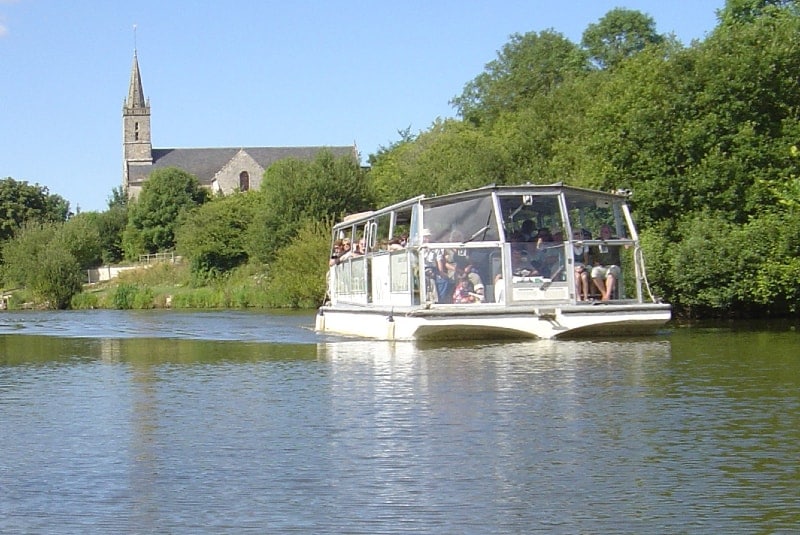
A river walk guided in the middle of nature with the boatmen of the Marais du Cotentin
The family business “les Bateliers des Marais du Cotentin“ invites you aboard the “Barbey d’Aurévilly II “to visit this large space of preserved nature. Named after the poet from the Cotentin who wrote so much about the marshes, the boat starts its walk from the pier of the Jourdan bridge near the park house of Saint Côme du Mont.
Dominique Marie, His captain and child of the country, knows the marshes like his pocket. Throughout the walk he will present them to you in a playful way embellished with small words of humor sympathetic. History, management, wild inhabitants of the marshes… you will discover along the water the secrets of this corner of paradise.
From march to September, embark on a day or half day tour. A stopover in Liesville-sur-Douve is planned during the walk which you can discover this charming village and its church.
For more information or to organize a visit, go to the site of the Bateliers of the Marais du Cotentin where you will find the plan of access, the rates or the schedule of departures.
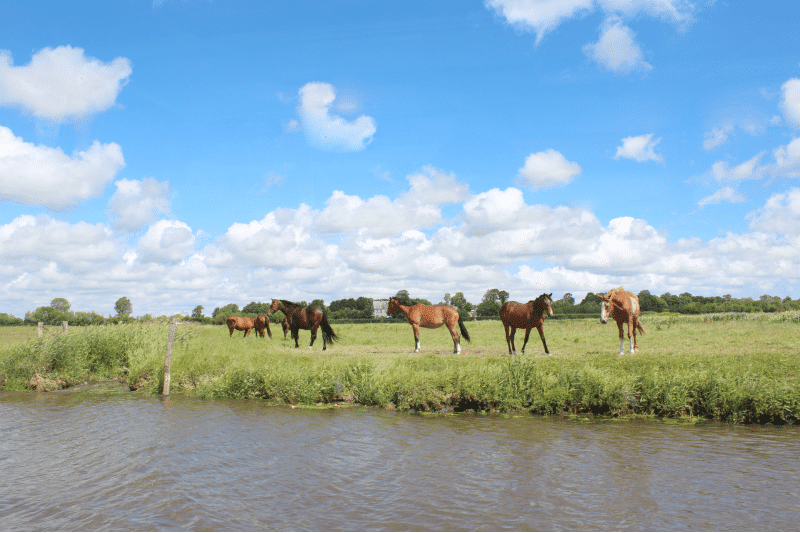
Beautiful discoveries on the road thanks to a preserved animal life
During your walk in the valley of the Douve, you will discover all the life that inhabits these marshes: birds, rodents, fish and plants.
The river flows between immense grasslands. On these large grassland’s breeders graze horses and cows. When we look at the banks, we see many holes. It was the bank swallows that dug them to make their nest. Some of the larger holes are muskrat or ragondin habitat. Since they are native to South America, they have no natural predators in Europe and are therefore very present in marches.
The Marsh park is also a privileged place for birds. Many species you can see such as grey herons, cormorants, gulls, egrets, spring wagtails, water hens, storks, mallards …
There are also many kingfishers on the river. This little bird digs its nest in the banks and lines its gallery with fish stops. It removes the predators first by the foul smell of the stops then this sting them if they try to approach.
Along the river you can see some funny huts on the shore. They’re Gabions. They’re duck-hunting shelters. When the water rises in winter hunters use marsh flats, a small boat with a very flat bottom to reach their gabions.
On the shore many fishermen watch their line. It must be said that this natural area is classified as a 2nd category river and is renowned for its abundance, variety and size of its species. Pike, carp, roach, eels, brown crayfish… but also some seawater fish such as mullet or shad that swim up streams for breeding.
Discovering the history of the marsh, a heritage related to water management
In winter the increase of the rains causes a rise of the waters that gives the marshes a whole new image. This phenomenon called “la blanchie” has a mysterious smell on the landscape. The water covers most of the landscape, leaving only the top of the fences and trees, the grass of the pastures being henceforth part of the aquatic world.
While the boat glides quietly between the large expanses of greenery of the park, our guide explains how the marshes were used throughout history and what systems were put in place to manage the flow of its various rivers. These hydraulic installations include the floating doors. Naturally powered by the movement of the tide, the floating doors allow to regulate the water level in the marshes.
They prevent seawater and therefore salt water from entering the land, which would have disastrous ecological consequences. There are several in the Marsh Park. On the Douve it’s located south of Saint-Côme-du-Mont on the bridge of the Barquette and were built in 1735.
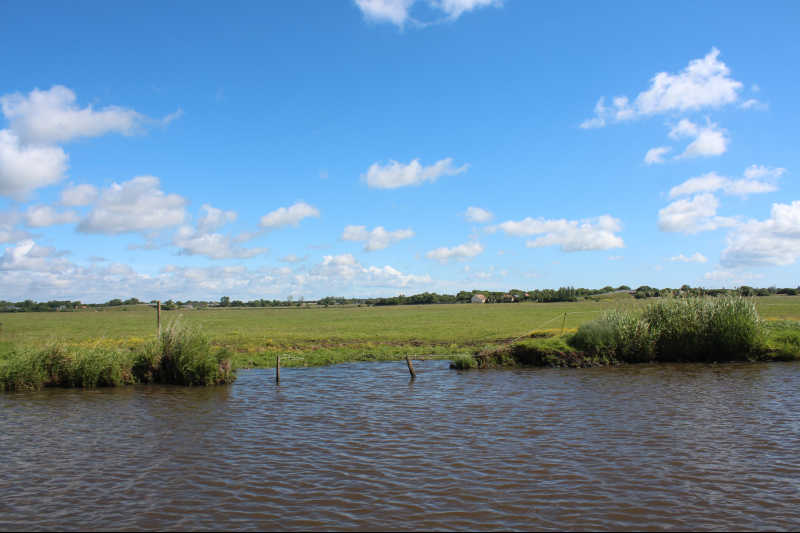
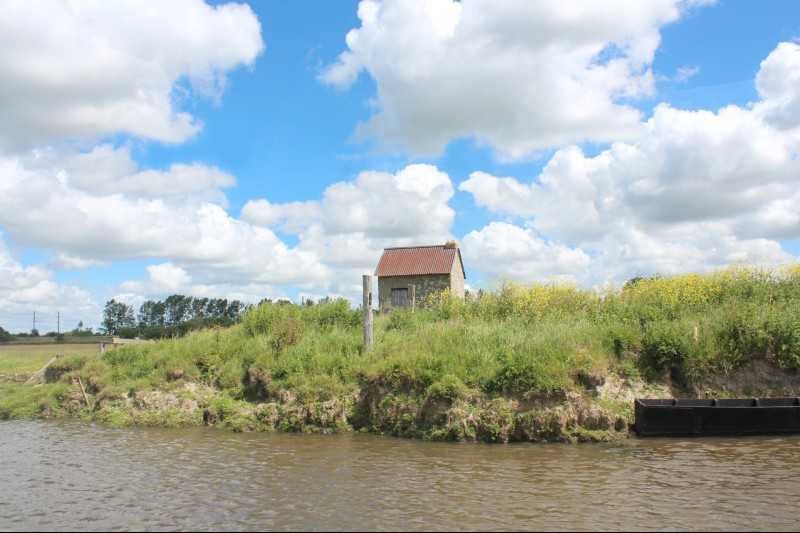
The captain also describes the commercial use of these waterways by “les gabardiers” in the 18th century. “Les gabares” were long flat boats equipped with a large sail carrying cargo. River navigation was important at the time. We still see on the shore the small house of the collector who came to collect the tax of passage. It was only used in summer because the water flooded it almost completely in winter.
Then came the tragic chapter of the Normandy landing. The Germans had voluntarily flooded the marshes to hinder the landing of American paratroopers. Each year at the D-Day festival, parachute jumps are made next door, at the place called “La fière” to commemorate the memory of these men. After the liberation, the first years were difficult for the famers with the land destroyed.
Our guide also tells us about the agricultural life of the marshes in the 18th century: the milking of cows by the “Triolettes” which came up to three times a day, the crossing of the rivers by the breeders and their flock to save time compared to the road. The park is also home to Europe’s first windmills.
On the shore you can still see the remains of an old lime kiln that operated until 1961. Lime was developed for these multiple uses such as soil disinfection after animal husbandry.
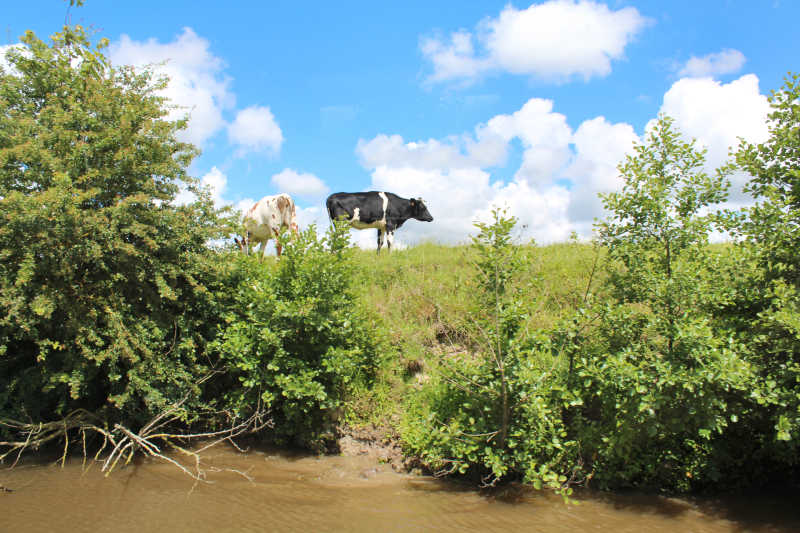
A refreshing walk in the heart of nature to do absolutely to disconnect from every day. Walk along the water in this still wild and atypical environment are the marshes. At the rhythm of nature, take the time to discover its landscapes and meet its inhabitants under the informed comments of the captain of the boat.






